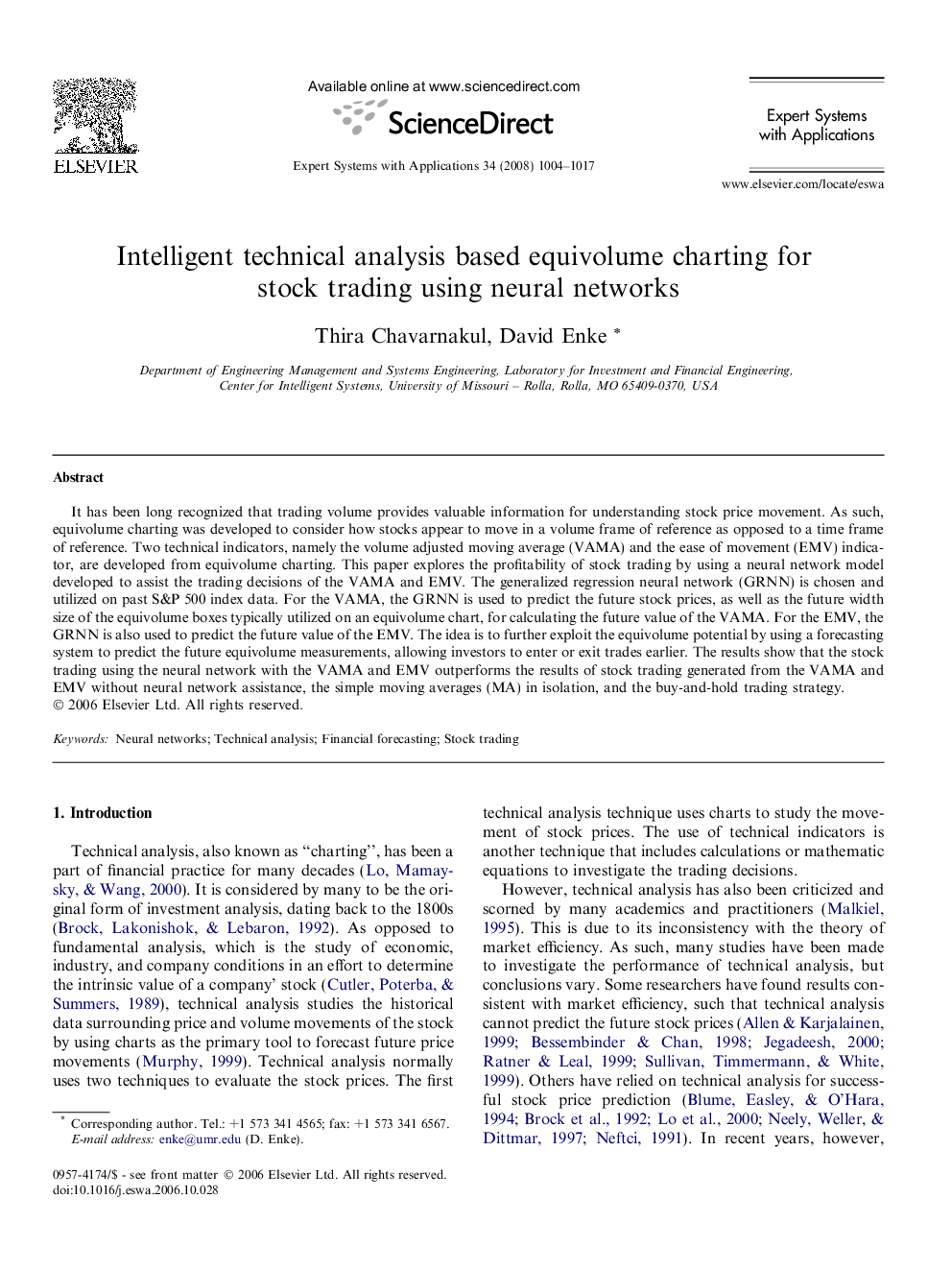| Article ID | Journal | Published Year | Pages | File Type |
|---|---|---|---|---|
| 387926 | Expert Systems with Applications | 2008 | 14 Pages |
It has been long recognized that trading volume provides valuable information for understanding stock price movement. As such, equivolume charting was developed to consider how stocks appear to move in a volume frame of reference as opposed to a time frame of reference. Two technical indicators, namely the volume adjusted moving average (VAMA) and the ease of movement (EMV) indicator, are developed from equivolume charting. This paper explores the profitability of stock trading by using a neural network model developed to assist the trading decisions of the VAMA and EMV. The generalized regression neural network (GRNN) is chosen and utilized on past S&P 500 index data. For the VAMA, the GRNN is used to predict the future stock prices, as well as the future width size of the equivolume boxes typically utilized on an equivolume chart, for calculating the future value of the VAMA. For the EMV, the GRNN is also used to predict the future value of the EMV. The idea is to further exploit the equivolume potential by using a forecasting system to predict the future equivolume measurements, allowing investors to enter or exit trades earlier. The results show that the stock trading using the neural network with the VAMA and EMV outperforms the results of stock trading generated from the VAMA and EMV without neural network assistance, the simple moving averages (MA) in isolation, and the buy-and-hold trading strategy.
